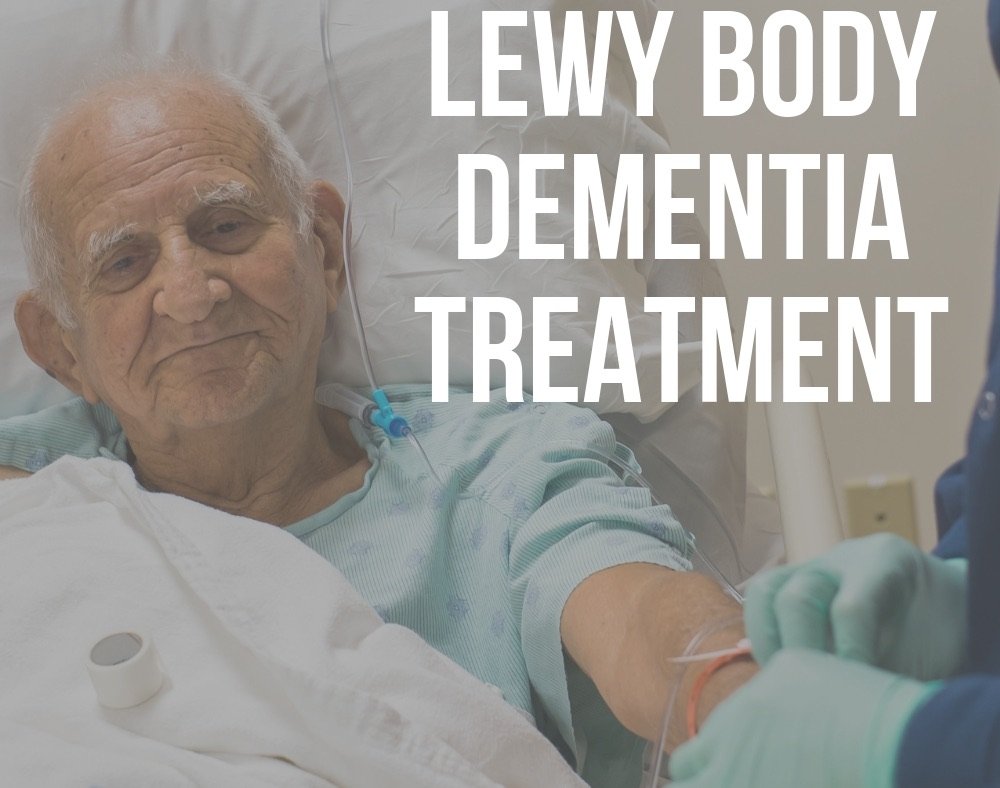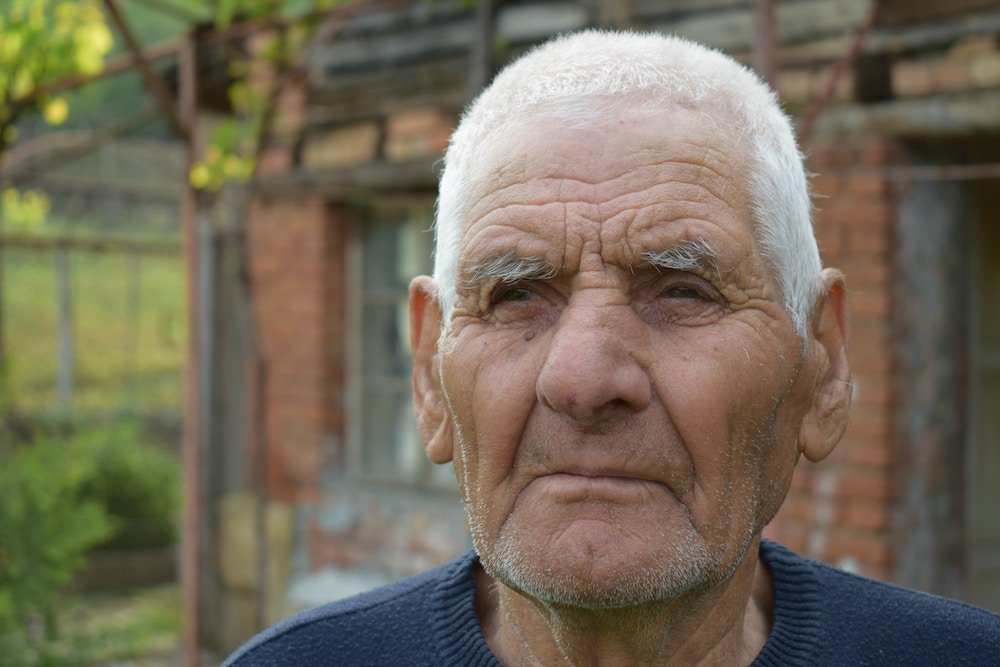After a person has been diagnosed with Lewy body dementia, the first thing they want to know is the options available in regards to Lewy body dementia treatment.
This is a type of dementia that develops when abnormal protein deposits, also known as Lewy bodies, are found in various areas of the brain.
These round, smooth lumps end up disrupting the normal functioning of the brain.
Sadly, to date, there is still no cure for the condition.
Best Lewy Body Dementia Treatment
There are some treatment options, however, available to help treat specific LBD symptoms, such as:
Use of Medications
There are different types of drugs that specialists can recommend for individuals who have Lewy body dementia as follow.
Cholinesterase Inhibitors

These are medications for Alzheimer’s disease that help to boost the levels of chemical messengers understood to be vital for judgment, memory, and thought in the brain.
Apparently, they enhance cognition and alertness. In some cases, they also help to reduce hallucinations and a host of other behavioral problems.
Drugs that your doctor may prescribe to help with these include Exelon, Razadyne, or Aricept among others.
Parkinson’s disease Medicine

Some drugs can help reduce some of the signs and symptoms of Parkinson’s disease like slow movement and rigid muscles. These are drugs like Duopa, Rytary, and Sinemet, etc.
After taking these, you may find that a person can walk better and they experience less muscle stiffness.
Memantine

This is a drug that works by blocking the effects a person gets when they have excess amounts of glutamate, a chemical in the brain. It is mainly used by individuals who have moderate or severe dementia with Lewy bodies.
It’s also suitable for those who cannot take inhibitors for one reason or another.
Physicians may also recommend medications to treat some of the symptoms and signs that people with Lewy body dementia have.
Some individuals may be put on anti-psychotic drugs or tranquilizers to help lessen agitation.
Those who are facing depression may also get Antidepressants. These may offer solutions for sleep issues or movement problems.
Depending on how the body reacts to the illness, the person with Lewy body dementia may be on one or multiple drugs at the same time.
Before you take any drug to help with the medical condition, it is important to check any side effects they may bring about.
Some of the drugs above may bring about increased delusions, hallucinations, and confusion depending on the drug you are taking.
This is why it is important to consult widely with professionals before you start taking any medication.
Many doctors will start administering the medication in low doses, and if it is beneficial to the person with dementia, they increase the dosage levels over time.
If you experience any side effects, report to the physician immediately so that the professional will advise on whether to discontinue the drug or not.
When using medicine as part of the Lewy body dementia treatment plan, it is advisable to stay away from drugs that have anticholinergic properties.
These may end up making the condition worse because of the numerous adverse side effects they can cause. First-generation antipsychotic medications are also on the list of medications to avoid.
These can cause severe Parkinsonism, confusion, sedation, and can also be fatal.
Non-Drug Treatment Options

Non-drug approaches can also be part of the comprehensive Lewy body dementia treatment plan.
Depending on an individual, one may combine medication and these treatment varieties while others may stick to one type of treatment.
There are several options people have when it comes to non-medicinal treatment options, such as:
Therapies
People who have Lewy body dementia can benefit from different types of therapies, like:
1. Speech therapy
This can come in handy for individuals who experience poor enunciation and low voice volume. Experts agree that it can also help with swallowing challenges and enhancing muscle strength.
2. Physical therapy
Some of the options available include flexibility, strengthening and cardiovascular exercises as well as gait training.
Doctors may also advise a person with Lewy dementia to be active in a physical fitness program to engage in activities like water exercises, aerobics, and strengthening exercises.
3. Occupational therapy
It is also highly recommended because it may assist in maintaining skills as well as promoting independence and function.
Do not miss our complete overview of the different benefits of occupational therapy.
4. Psychological therapies
These can include cognitive stimulation where a person engages in exercises and other actives that help to enhance language ability, problem-solving skills, and memory.
5. Mental health counseling
This helps persons with dementia with Lewy bodies to learn how to better cope with their emotions and behavior changes.
Complementary Therapies

There are other forms of therapies that can help people who have Lewy body dementia feel better, like:
1. Pet therapy
For most people spending time with pets, they love can be an automatic mood booster. Getting a cat, dog, bird, or any other animal that a person loves can be just what they need to feel better.
2. Supplements and vitamins
Studies suggest that people with dementia with Lewy bodies lack adequate vitamins and nutrients in their bodies, something that can make the illness worse.
Taking adequate supplements and vitamins can help to take care of this problem. Just consult with your physician before taking anything because some of the supplements can interact with the drugs you are taking.
3. Aroma, dance, and music therapy
These usually work to improve an individual’s mood and also reduce anxiety by soothing and calming an individual.
We also created individual articles about aromatherapy, dance therapy and music therapy, where you can learn about all the benefits.
4. Massage
A person may also need professional massages once in a while to help with relaxation.
Home Modifications

Although this may not be direct Lewy body dementia treatment options, some changes around the house can help a person with dementia to be more comfortable.
Several things can be done under this including:
1. Reducing clutter
With the help of a professional caregiver, it is crucial to modify the environment where the person with Lewy body dementia will be spending most of their time.
This can include using calming colors and removing things that can distract the person with the illness so that they can function better.
2. Make adjustment
Removing potential trip hazards like loose carpets can be of great help to persons with Lewy body dementia.
It is also vital to make sure that the affected person stays in a well-lit place. Adding handrails and grab bars is also a great idea.
You should also arrange furniture in such a way that it will not get in the way and cause problems.
Other Lewy body dementia treatment options that can be of assistance include:
1. Family psychotherapy
This helps people who want to support the patient with Lewy body dementia to learn how to effectively manage behavioral and emotional symptoms to co-exist well with their loved ones.
2. Getting quality sleep
It is common for people with Lewy body dementia to experience episodes of sleep disturbance.
It is, however, important for caregivers and individuals to try as much as possible to get restful nights as this also helps with treatment.
Some of the things that people can do include napping less during the daytime, engaging in physical exercise and having regular bed-time and waking-up time.
It is also advisable to avoid caffeine and nicotine when you are just about to jump into bed. Keeping the sleeping area quiet at comfortable temperatures can also help a great deal.
3. Stimulating mental functioning
You can do this easily by playing games and puzzles that demand thinking skills.
4. Support group
A person with dementia with Lewy bodies can also join a support group. These allow them to be surrounded by other people who have similar illnesses so that a person does not feel like they are alone.
Sharing experiences of the illnesses can also help one to identify practical solutions that they can use daily to reduce frustrations.
These may also encourage members to take part in exciting activities they like so that they can take their mind off the illness and enjoy life a little bit.
5. Creating routines
Having set structures and routines has been known to be beneficial to people with dementia because it helps to reduce confusion.
It can also help to enhance independence, especially during the first stages of the illness.
Final thoughts
Because people with Lewy body dementia usually experience the condition differently, it is important to be very careful when selecting the ideal Lewy body dementia treatment option.
What may work for one person may end up making your situation worse. Do not self-medicate simply because you read somewhere that there are drugs people with dementia can take to manage symptoms.
Always work with an expert physician who will closely monitor any medication or non-drug treatment you are on to know whether it is good for your body or not.
It’s also essential to conduct thorough research because they are new treatment methods cropping up often.
This will not only help you stay informed, but you can discuss the new developments with your doctor to pick a treatment option that will work for you.


![15 Lewy Body Dementia Symptoms [LBD] lewy body dementia symptoms](https://readementia.com/wp-content/uploads/2019/05/lewy-body-dementia-symptoms.jpg)














